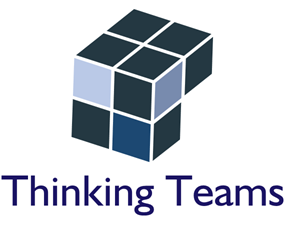The workplace is being disrupted by Artificial Intelligence. A 2019 report by McKinsey Global Institute projects that by 2030, up to 39 million jobs in the US will be displaced by AI. What is the nature of this displacement? In the shadow of AI, how can workers make sure they stay employed and organizations make sure they have the skills they need?
First let’s talk about what AI does for an organization, how it’s used. Recall that today’s AI uses massive artificial neural networks, trained with massive amounts of data. The ‘superpower’ these systems bring to the table is their ability to recognize very complex patterns in digital data. AIs are essentially pattern recognizers. And they are a good fit to today’s world, much of which is represented online as digital data: images, video, business reports, news, financial transactions, customer preferences, ….
AI’s ability to recognize patterns can do lots of useful work. For example AI can be used to augment or replace a human worker’s eyes, ears, brain, or even arms and legs in performing tasks such as:
- Industrial inspection, inventory management and warehousing, farming, security, transportation, and elder care
- Data entry, customer service, market analysis, travel booking, legal document review, and sentiment analysis
- Personal assistance, language translation, news and weather reporting, image captioning, and document summarization
- Crime pattern detection, materials and drug discovery, credit checking and fraud detection, business lead generation, and business forecasting
- Warehousing, factory assembly, taxi service, delivery service, and long-haul trucking.
Where does this leave us humans?
A short answer: as with other workplace revolutions such as steam engines, mass production, computers, or the internet, some jobs will disappear, new jobs will appear, and many jobs will morph into something different.
AI will tend to replace human labor in jobs that involve routine mental or physical work. For example the 2019 McKinsey report projects that the number of office support jobs in the US will decline from 21 million in 2017 to 18 million in 2030 (an 11% loss), while the workforce will grow 9% over the same period for all jobs in the categories analyzed. Factory jobs, over the same period, are expected to decline by 5%.
Strong job growth 2017 – 2030 is expected in occupational categories that emphasize human relations (health care, 36%; business and legal professionals, 20%; education and training, 18%), as well as in STEM professions (37%).
Of course in a growing economy there can be job growth even in job categories where AI will replace a lot of human labor. For example, McKinsey estimates that 25% of today’s work in customer service and sales will be replaceable by AI by 2030; however the number of jobs in this occupational category will still grow by 10% during that time.
Across all job categories, McKinsey estimates that 25% of human labor expended in 2017 will be replaceable by AI by 2030. This replacement potential ranges from 10% to 39% of the current workforce for every job category. This means few of us will be far from AI’s impact.
How can workers and organizations get ready for the AI transition? A 2019 MIT Sloan School report highlights the need for employers and workers to create and maximize the motivation to learn and adapt over their lifetimes. In a previous blog post I address the need for organizations to adopt an “all-in” approach to AI, integrating organization, IT, and operations.
At the individual level, many workers will need to become familiar with and learn to work with AI. Although AI technology is being developed through the work of specialized researchers with advanced university degrees, the AI research community has made learning about and using the technology surprisingly accessible.
For example Google, Amazon, and Apple all offer free cloud-based environments where workers can learn about AI, and develop and run business tools, without an extensive AI background. A 2019 Northeastern University/Gallup study found that organizations are increasingly developing the internal AI skills they need by training existing staff or through non-degreed interns.
Yes, AI is disrupting the workplace. It is accelerating automation. Workers and organizations must adapt and learn, and then adapt and learn again. But this challenge is accompanied by unparalleled opportunity.
So, how is it going so far? Interesting data point: by analyzing job postings, ZipRecruiter estimates that AI created about three times as many jobs as it destroyed in 2018.


Great blog! I’m enjoying following your articles!
LikeLike